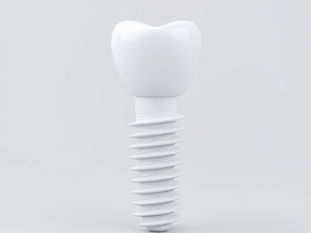
The Hidden Risks of Mercury in Dental Amalgams and the Smart Protocol for Safe Removal
Aug 15
4 min read
0
1
0
Dental health is essential to overall well-being, yet many remain unaware of potential dangers in their dental treatments. One such concern is the use of mercury in dental amalgams, a common filling material. This post will explore the risks associated with mercury exposure from amalgam fillings and introduce the Smart Protocol for safe removal, developed by the International Academy of Oral Medicine and Toxicology (IAOMT).
Understanding Mercury and Its Risks
Mercury is a heavy metal with serious health implications. It exists in several forms: elemental, inorganic, and organic mercury. The mercury in dental amalgams is primarily elemental, mixed with other metals to create a sturdy filling material.
Research indicates that mercury can gradually be released from dental amalgams, especially during chewing, grinding, or when exposed to hot foods and drinks. This release may raise mercury levels in the body, contributing to various health issues. For instance, studies show that even small amounts of mercury exposure can lead to neurological disorders, kidney damage, and immune system challenges. A 2018 study found that mercury exposure from amalgams increased the risk of developing cognitive issues by 25% in adults over 50.
The Dangers of Mercury in Dental Amalgams
For decades, the use of mercury in dental amalgams has sparked debate. Despite being used for over 150 years and deemed safe by some professionals, mounting evidence suggests that the risks may outweigh the benefits.
Studies have linked mercury exposure to various health problems, including:
Neurological Effects: Mercury can significantly impact the nervous system. Symptoms may include tremors, memory loss, and cognitive decline. Research shows that children exposed to mercury are 3.5 times more likely to exhibit developmental concerns than those without exposure.
Kidney Damage: Mercury accumulates in the kidneys and can lead to impaired function. A 2019 study indicated that individuals with higher mercury levels had kidney damage rates 16% greater than those with lower levels.
Immune System Dysfunction: Mercury exposure could suppress the immune system, raising susceptibility to infections and diseases. One study noted a 40% increase in infection rates among individuals with high mercury exposure.
Hormonal Disruption: Mercury affects hormone production and regulation, which may lead to reproductive issues and hormonal imbalances. For example, research has shown that mercury exposure can disrupt thyroid function, impacting metabolism and overall health.
The Smart Protocol for Safe Amalgam Removal
Acknowledging these dangers, the IAOMT developed the Smart Protocol, a comprehensive approach to safely remove dental amalgams. This protocol minimizes the risk of mercury exposure for both patients and dental personnel during the removal process.
Key Components of the Smart Protocol
Pre-Removal Assessment: A thorough assessment evaluates the patient's health history and potential sensitivities to mercury. This step ensures a tailored approach for each patient.
Use of Protective Equipment: Both patients and dental staff wear protective gear, such as masks, gloves, and eye protection, to limit exposure to mercury vapors and particles.
Isolation Techniques: The treated tooth is isolated with a rubber dam. This containment prevents any mercury particles from entering the patient's mouth.
High-Volume Suction: A high-volume suction system captures mercury vapors and particles during removal, further reducing exposure risks.
Proper Disposal: All removed amalgam material is disposed of according to regulations to prevent environmental contamination, ensuring safety beyond the dental office.
Post-Removal Care: Patients receive guidance on care after removal, including dietary recommendations and detoxification strategies to support their health.
The Importance of Choosing a Mercury-Free Dentist
When considering dental work, it’s vital to select a dentist informed about the risks of mercury and committed to safe materials. Many dental practices now offer mercury-free alternatives, such as composite resins and glass ionomer cements.
Patients should empower themselves by asking questions about the materials used in their dental treatments. A reputable dentist will gladly discuss their approach to care and the options available for safe, effective treatments.
Studies show that patients who opt for mercury-free materials report higher satisfaction rates.
Taking Charge of Your Dental Health
The hidden risks of mercury in dental amalgams are a significant concern for many seeking dental care. Understanding potential dangers is crucial for making informed dental treatment decisions.
The Smart Protocol for safe amalgam removal, developed by the IAOMT, offers a comprehensive approach to minimizing risks during this process. By selecting a mercury-free dentist and advocating for safer practices, patients can safeguard their health and well-being.
As awareness continues to grow, it’s vital for individuals to stay informed and take proactive steps to ensure their dental health is not compromised by harmful materials.



Disclaimer
This article is for informational purposes only and does not constitute medical or dental advice. Each case is unique, always consult with your dentist, physician, or qualified healthcare provider before making decisions about your health or treatments.











